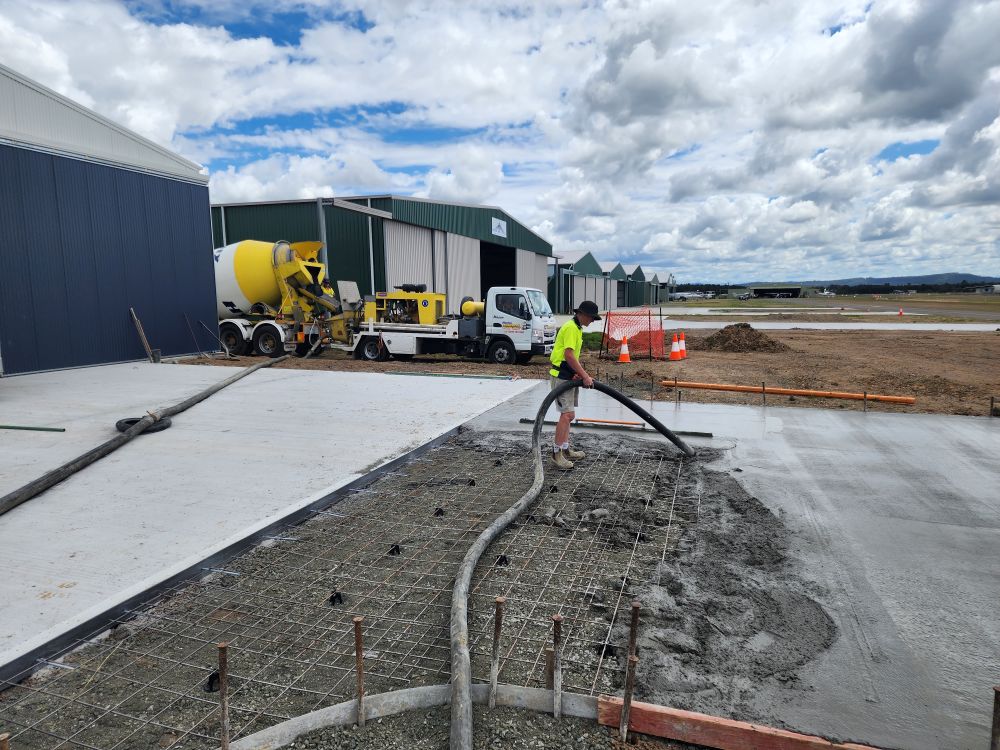Your Comprehensive Guide to Effectively Calculating Concrete Volume for Construction Projects
To achieve a precise estimate of the volume of concrete required for your construction endeavour, it’s essential to utilise the straightforward yet powerful formula: Length × Width × Depth. It’s advisable to increase your calculations by an additional 10% to accommodate potential waste, spillage, and the irregularities of ground conditions that may occur during the concrete pouring process. Should you have any uncertainties about your measurements or calculations, do not hesitate to contact Hunter Concrete Pumps, who can provide expert guidance to ensure your estimates are not only accurate but also specifically tailored to your project’s requirements.

Employing the Standard Volume Calculation Formula for Your Concrete Projects
When dealing with concrete, the measurement is traditionally expressed in cubic metres (m³). To accurately ascertain the quantity necessary for a concrete slab or foundation footing, simply apply the formula provided below:
Length (m) × Width (m) × Depth (m) = Volume (m³)
Before commencing any calculations, make sure that all dimensions are converted into metres. For instance, if you have a slab measuring 8 metres in length, 5 metres in width, and a thickness of 100mm (which translates to 0.1m), the calculation would appear as follows:
8 × 5 × 0.1 = 4.0m³
It is crucial to refrain from ordering the exact calculated volume. Always round up your order by 10% to consider potential wastage, irregularities in formwork, or any spillage that might transpire during the concrete pumping process. Therefore, in this situation, you would ideally want to order 4.4m³ of concrete to ensure you have ample material for your project.
In-Depth Volume Guide for Common Slab Sizes and Their Concrete Requirements
| Slab Size (m) | Thickness (mm) | Volume (m³) | Add 10% Overrun | Final Order (m³) |
| 4 × 4 | 100 | 1.6 | 0.16 | 1.8 |
| 6 × 6 | 100 | 3.6 | 0.36 | 4.0 |
| 8 × 5 | 100 | 4.0 | 0.40 | 4.4 |
| 10 × 6 | 150 | 9.0 | 0.90 | 9.9 |
| 12 × 10 | 100 | 12.0 | 1.20 | 13.2 |
Effective Strategies for Precisely Calculating Volume in Various Scenarios
- Strip Footings: When calculating for strip footings, employ the standard method of multiplying length, width, and depth. However, keep in mind that footings can vary significantly in size. In such cases, dividing the work into smaller segments can enhance accuracy and ensure that you take into account all variations.
- Circular Slabs or Pads:
For determining the volume of circular slabs, you can utilise the formula: π × radius² × depth. For instance, if you have a pad with a diameter of 3m and a depth of 100mm, the calculation would be:
π × (1.5)² × 0.1 ≈ 0.71m³. Always remember to include an additional 10% for overrun to ensure you have sufficient material. - Heavily Reinforced Slabs:
In cases where slabs incorporate significant reinforcement with dense rebar or mesh, the required volume may be marginally reduced. Our expert team is available to assist you in making the necessary adjustments to your calculations to ensure they align with your project’s specifications.
Need Expert Assistance with Your Concrete Volume Calculations? Contact Us Today!
If you are uncertain about the precise quantity of concrete required for your project, please share your slab dimensions, footings plan, or PDF drawings with us. Get in touch for a comprehensive and accurate quote tailored to your needs. We will handle the calculations, ensure we round up appropriately, and even coordinate the concrete mix if you decide to utilise our pumping crew. Hunter Concrete Pump Hire provides services across the Newcastle area, The Hunter Valley, and a significant portion of the Central Coast. We are dedicated to helping you achieve success in your construction projects!
Your Reliable Source for Concrete Pump Hire in Newcastle
The Article: Estimating Concrete Volumes Accurately for Pumping first appeared on https://writebuff.com
The Article Accurate Estimating of Concrete Volumes for Pumping Was Found On https://limitsofstrategy.com
2 Responses
This is a solid breakdown of the concrete volume calculation! I’ve been in situations where we underestimated how much we actually needed, and that extra 10% really saved us from a headache. It’s interesting how small adjustments can impact project timelines and budgets.
Your discussion on accurately calculating concrete volume resonates deeply with anyone involved in construction, whether as a DIY enthusiast or a seasoned professional. The formula you provided—Length × Width × Depth—is indeed a fundamental one that seems simple at first glance but carries significant implications for the success of a project.